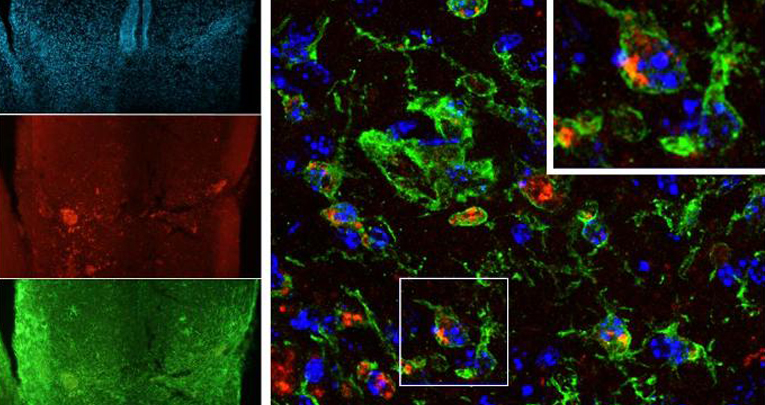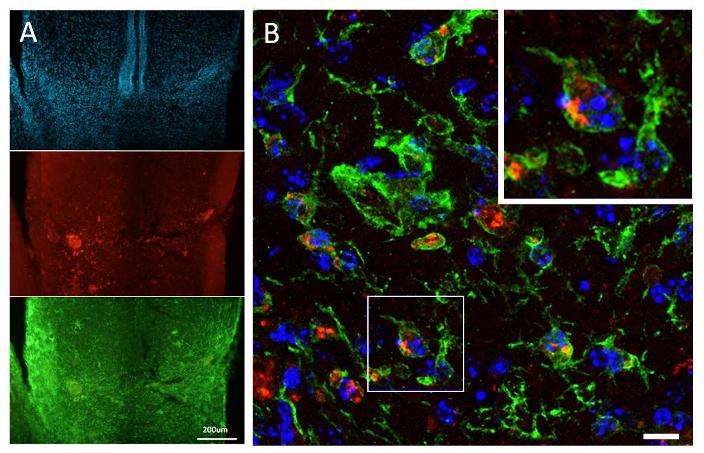
Biomedicines , 2021 April
Imaging of Inflammation in Spinal Cord Injury: Novel Insights on the Usage of PFC-Based Contrast Agents
Francesca Garello, 1,† Marina Boido, 2,3,4,*† Martina Miglietti, 3 Valeria Bitonto, 1 Marco Zenzola, 1 Miriam Filippi, 1 Francesca Arena, 1,5 Lorena Consolino, 1 Matilde Ghibaudi, 2,3 and Enzo Terreno 1,*
Labeling of macrophages with perfluorocarbon (PFC)-based compounds allows the visualization of inflammatory processes by 19F-magnetic resonance imaging (19F-MRI), due to the absence of endogenous background. Even if PFC-labeling of monocytes/macrophages has been largely investigated and used, information is lacking about the impact of these agents over the polarization towards one of their cell subsets and on the best way to image them.
In the present work, a PFC-based nanoemulsion was developed to monitor the course of inflammation in a model of spinal cord injury (SCI), a pathology in which the understanding of immunological events is of utmost importance to select the optimal therapeutic strategies.
The effects of PFC over macrophage polarization were studied in vitro, on cultured macrophages, and in vivo, in a mouse SCI model, by testing and comparing various cell tracking protocols, including single and multiple administrations, the use of MRI or Point Resolved Spectroscopy (PRESS), and application of pre-saturation of Kupffer cells. The blood half-life of nanoemulsion was also investigated by 19F Magnetic Resonance Spectroscopy (MRS).
In vitro and in vivo results indicate the occurrence of a switch towards the M2 (anti-inflammatory) phenotype, suggesting a possible theranostic function of these nanoparticles. The comparative work presented here allows the reader to select the most appropriate protocol according to the research objectives (quantitative data acquisition, visual monitoring of macrophage recruitment, theranostic purpose, rapid MRI acquisition, etc.). Finally, the method developed here to determine the blood half-life of the PFC nanoemulsion can be extended to other fluorinated compounds.
Representative images of the injured spinal cord at the lesion level at 14 days post injury following a single administration of PFCE nanoemulsion (PCFE-NE). (B) Confocal fluorescence microscopy at the lesion level of the spinal cord showing the internalization of PFCE-NE (red) into the IBA1-positive macrophages (green). Nuclei (DAPI positive) are displayed in blue.
1
Molecular and Preclinical Imaging Centers, Department of Molecular Biotechnology and Health Sciences, University of Torino, 10126 Torino, Italy;
2
Department of Neuroscience “Rita Levi Montalcini”, University of Turin, 10126 Turin, Italy;
3
Neuroscience Institute Cavalieri Ottolenghi, University of Turin, 10043 Orbassano (TO), Italy;
4
National Institute of Neuroscience (INN), 10126 Turin, Italy
5
Institute of Biostructures and Bioimaging (IBB), Italian National Research Council (CNR), 10126 Torino, Italy
†
These authors contributed equally to this work.








